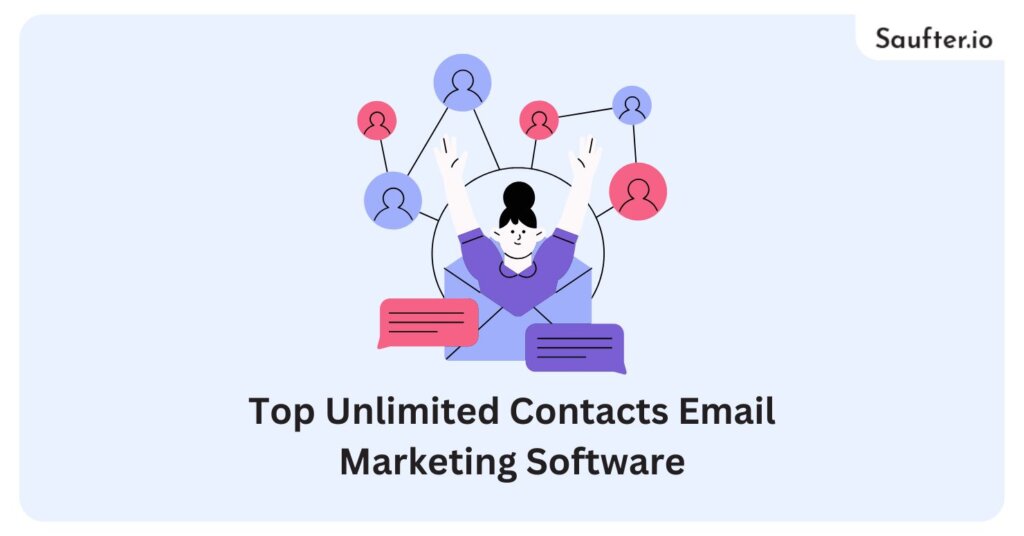Last Updated: October 2025
Email marketing remains a powerhouse in digital communication, delivering an average ROI of $42 for every $1 spent. However, as businesses grow their subscriber lists, many face limitations from platforms that charge more as contacts increases.
That’s where unlimited contacts email marketing solutions come in—providing the freedom to scale without extra costs. Whether you’re a startup or an established brand, choosing the right platform can significantly boost your outreach and efficiency.
In this article, we’ve rounded up the Top 15 Unlimited Contacts Email Marketing Software in 2025 to help you find the perfect tool for your growing business needs.
What Is Unlimited Contacts Email Marketing?
Unlimited contacts email marketing is a form of email marketing in which your email marketing service provider allows you to manage, store, and send campaigns to an unlimited number of subscribers stored in your list, without charging you any extra cost based on the size of the contact list.
These plans are ideal for:
- Businesses with fast-growing subscriber bases
- Marketers who manage multiple client lists
- Nonprofits or bloggers building large email communities
However, “unlimited contacts” is not necessarily the same as “unlimited everything.” Here are some of the platforms that are still restricted:
- The number of emails you can send per month
- The number of daily sign-ups or form submissions
- Access to premium features like A/B testing or automation
Unlimited contacts email marketing does help you build an audience without limitations, but be sure to review the features and sending limits included in each plan.
Top Email Marketing Tools with Unlimited Contacts
With the vast growth we’ll see in email users, it will still be one of the most effective digital marketing tools there is. Today, email is used by over 4.5 billion users across the world, and that number is expected to increase to 4.89 billion users by the year 2027.
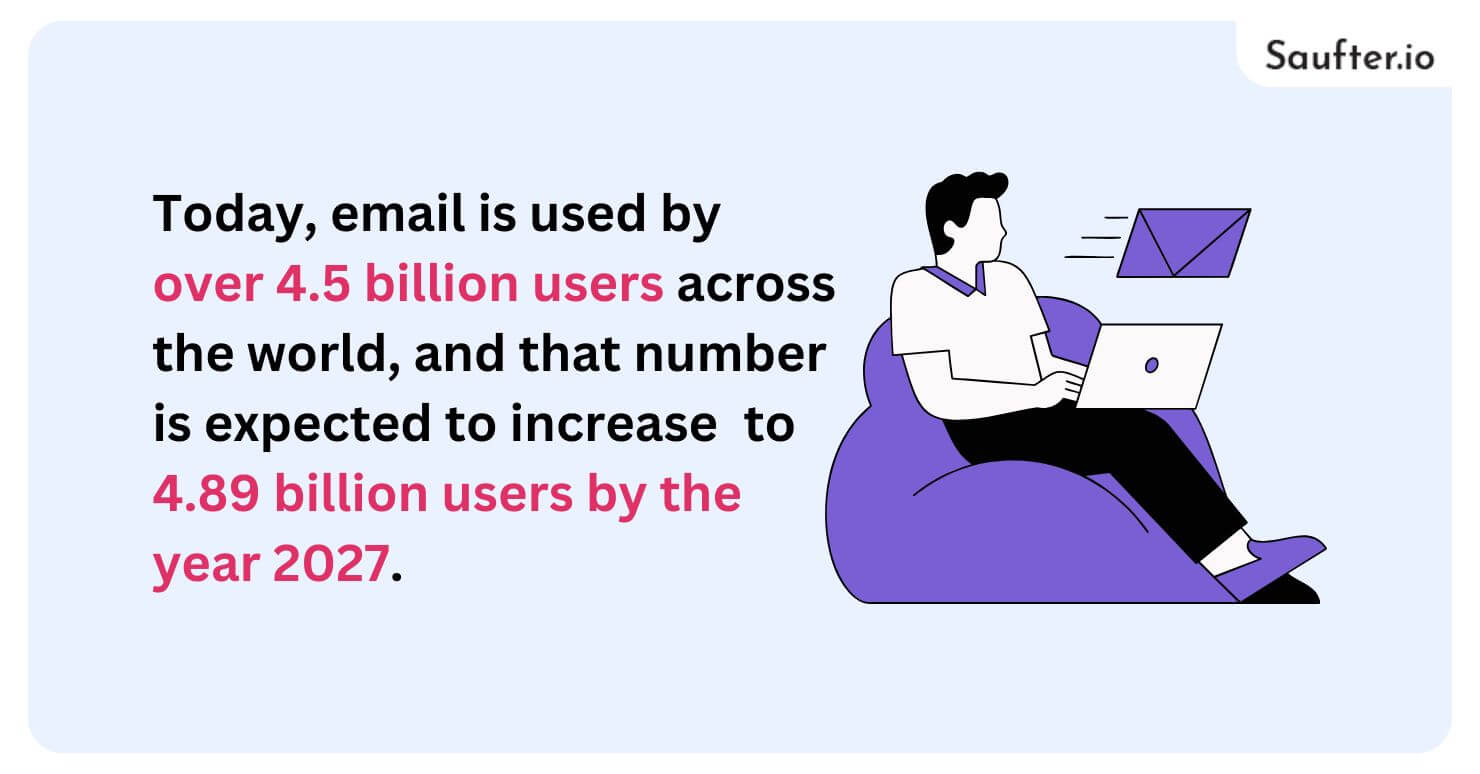
But some platforms charge you more as your subscriber list gets bigger. That’s why I’ve put together a list of the best email marketing platforms with unlimited contacts to make it easy to grow at reasonable prices.
1. Saufter

Ratings: 5/5⭐
Pricing: Free trials; Paid plans start at $8/month.
With Saufter, you can automate like a pro by following your competitors’ email campaigns and monitoring user behavior on your website. It tracks where the user is in their journey and recommends possible campaigns. The company offers personalized emails to help increase deliverability and segment audiences based on engagement.
For SaaS email marketing, it tracks which features people are using in the free trial, showing you which are leading to success based on industry or region. Then fires in-app or email messages if people drop off before getting to the ‘aha moments’. It also recommends newsletter campaigns based on user attributes.
In the e-commerce sector, Saufter sends out emails based on events such as cart abandonment or order delivery, tracks browsing behavior to recommend related products, and sends more targeted emails for better conversion.
Core features include email automation, behavioral analysis, and tailored marketing strategies.
2. Kit
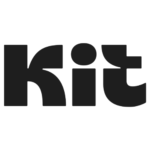
Ratings: 4.4/5⭐
Pricing: Free up to 10,000 subscribers; Paid plans start at $25/month.
Kit (formerly ConvertKit) is tailor-made for bloggers and creators, with tools such as landing pages, subscriber segmenting, and digital product sales. Its free plan is very generous, supporting up to 10,000 contacts with unlimited emails, forms, and landing pages.
This is what makes it one of the best free unlimited contacts email marketing software. Paid plans, from $25/month, unlock unlimited automations, sequences, and premium features including paid recommendations and integrations with other platforms. This is ideal for growing creators ready to scale their email marketing efforts.
3. Mailerlite
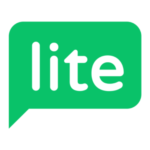
Ratings: 4.6/5⭐
Pricing: Free up to 1000 subscribers; Paid plans start at $9/month.
As its name implies, MailerLite keeps it minimalist when it comes to email marketing. It is user-friendly and offers useful aspects such as landing pages, forms, and automation. The “Free Forever Plan” comes with most of the features, except some of the advanced ones.
MailerLite is very user-friendly, great for beginners. With less than 1,000 subscribers, they can send 12,000 emails per month, and have landing pages and basic automation for free.
4. Sender
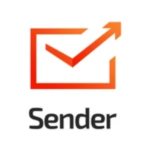
Ratings: 4.4/5⭐
Pricing: Free up to 2500 subscribers; Paid plans start at $7/month.
Sender is one of the easiest email marketing tools to use, with a simple user interface and a great user experience. Its basic plan comes with 2,500 subscribers and 15,000 emails per month, and you get unlimited automation and quality templates for free.
Apart from this, automation is at the next level; even at its free tier, you can produce abandoned cart emails and segment your subscribers between lists. A/B testing for subject lines, CTAs, and design is now available in workflows on Sender.
It’s a refreshingly straightforward, low-cost, but powerful free email marketing service with plenty of value for budding businesses.
5. Brevo

Ratings: 4.5/5⭐
Pricing: Free up to 300 Emails daily; Paid plans start at $8/month.
You may recognise this email marketing service as ‘Sendinblue’; it was up until May 2023. Now known as Brevo, it transitioned from an API-driven transactional email service into a full email marketing provider.
Its free plan grants up to 100k contacts and 9,000 emails/month (300/day), but with the email heatmaps or ad-free emails, some of its features are limited. We appreciated its sophisticated automation settings, e.g., it lets you test workflows according to user behavior.
Reporting is solid, but the free plan lacks opener/clicker data. Paid plans start at just $8 for 5,000 emails monthly.
6. Beehiiv

Ratings: 4.6/5⭐
Pricing: Free up to 2500 subscribers; Paid plans start at $49/month.
Beehiiv is an all-in-one newsletter platform for creators that includes email marketing, a website builder with a custom domain, and monetization tools. Its free plan offers unlimited emails to 2,500 subscribers and up to three newsletters.
It allows tagging, segmentation, and a powerful recommendation network for cross-promotion. Functionally, Beehiiv exceeds its competitors like Substack and Kit, although Kit has a more generous free plan.
Ideal for bloggers and writers, Beehiiv is one of our top picks for newsletter creators in 2025.
7. Zoho

Ratings: 4.3/5⭐
Pricing: Free up to 2k contacts; Paid plans start at $3/month.
Zoho is a huge player in the sales and marketing industry and provides a full business suite. Email marketing is handled by ZoHo Campaigns, with a slick, easy-to-use editor and a nifty selection of professionally designed templates to boot.
This is particularly attractive to cost-sensitive users. The good stuff includes a user-friendly design, a rapid editor featuring key elements like video, columns, and polls, and built-in Unsplash integration.
We especially liked the variety of email and form templates, making campaign creation smooth and professional.
8. Omnisend

Ratings: 4.6/5⭐
Pricing: Free trial; Paid plans start at $11.20/month.
Omnisend is an email service designed specifically for e-commerce, and it also comes with powerpack features, including automation workflows, integration of products in newsletters, and interactive add-ons such as scratch cards and gift boxes.
The even more amazing part is that all of those options are part of the basic free plan, which also offers website tracking, 24/7 support, in-depth reporting, and custom landing pages.
Finding this level of e-commerce-specific marketing might be just the solution for those looking for unlimited contacts email marketing with the strength of an e-commerce CRM that doesn’t cut corners in terms of creativity, functionality, or support. This is the case if you are operating on a budget at the start.
9. SendPulse

Ratings: 4.6/5⭐
Pricing: Free up to 500 subscribers; Paid plans start at $8/month.
SendPulse is a multichannel platform built for marketers who want more than just an email service. It supports web push, SMS, Viber, and SMTP for transactional emails. You begin with the free plan that allows 15,000 emails/month with a restriction of 500 subscribers.
That said, it has autoresponders, A/B testing, CRM, website builder, geolocation reports, and heat maps. Moreover, you can send 12,000 SMTP emails every month on the free plan, one of the more feature-laden free offerings available.
10. GetResponse

Ratings: 4.3/5⭐
Pricing: Free trial; Paid plans start at $15/month.
GetResponse provides you with all the tools you need for generating both one-time mail broadcasts and a series of automated messages. It has integrated auto-responders, email scheduling, and lightbox opt-in forms, which give it a great deal of flexibility.
You can kick things off with a 30-day free trial, and paid plans start from as little as $15 per month. A solid option for a cheap (but powerful) email marketing service.
11. EmailOctopus

Ratings: 4.1/5⭐
Pricing: Free up to 2500 subscribers; Paid plans start at $9/month.
Post Mailchimp, here’s another animal in the email marketing zoo. EmailOctopus is a different kind of bird. It was born on Amazon SES with all its glorious, world-class infrastructure.
Now, AWS is an option, meaning it works much like any other basic platform. You’ll start with 2,500 subscribers at no cost, and you have a 10,000-email monthly limit. It means you have a scalable, affordable solution for lists that are growing exponentially.
12. HubSpot

Ratings: 4.4/5⭐
Pricing: Free; paid plans start at $15/month.
Gather contacts through HubSpot’s forms and keep them tracked with its robust CRM, then send up to 2,000 emails/month for free. And you can add unlimited users and contacts.
The drag-and-drop editor is seamless, though limited; you only get access to a basic template, and you cannot upload HTML. You receive automation, landing pages, and standard web pages (some of the advanced features are available after you pay, however).
Overall, it offers a user-friendly platform with robust CRM tools and the ability to store up to 1 million contacts at no cost.
13. AWeber

Ratings: 4.2/5⭐
Pricing: Free trial; Paid plans start at $12.50/month.
Founded in Pennsylvania in 1998 and in business for over 20 years, AWeber is one of the companies that claims to have invented the autoresponder. Its free plan is surprisingly robust, including simple automation, landing pages, unlimited users, phone support, and thousands of stock photos.
Additionally, users get access to AWeber’s extensive library of mobile-responsive newsletters and landing page templates. Compared to others on this list, AWeber stands out by including many premium tools in its free plan, making it a strong choice for small businesses and beginners.
14. Mailchimp

Ratings: 4.3/5⭐
Pricing: Free up to 500 contacts; Paid plans start at $8.99/month.
The truth is that email marketing can be painful, but Mailchimp’s entertaining, irreverent design and product features make it stand out. Once generous, it now gives a paltry 1,000 emails/month to 500 contacts on its free plan.
You can automate it, A/B test it and get support once you upgrade. What we like is its in-depth reporting, landing pages, robust e-commerce tracking, and eight hundred+ integrations, including niche ones like OpenTable. It’s limited to the free plan, but one of the most widely used and easy-to-use email marketing tools.
15. Benchmark

Ratings: 4.3/5⭐
Pricing: Free up to 500 subscribers; Paid plans start at $13/month.
Offering a sleek, accessible aesthetic, Benchmark ranks among the easiest-to-use email marketing tools. Although automation, A/B testing, and daily sign-ups over 75 are restricted, its free Starter plan gives you access to automation, forms, surveys, and reports.
You are also limited to 3,500 emails/month. We liked its contemporary templates, mobile-optimized content layout, and intuitive drag-and-drop editor.
Support is fast (even on the free plan), and Benchmark integrates with over 300 other apps like WordPress, Shopify, and Facebook.
How to Build an Email Marketing List
Creating an email marketing list is the most important part of your campaign. If you do it the right way, you’ll have a higher engagement rate and better deliverability. Here’s how you can grow your list the right way:
- Create a Lead Magnet: Provide something of value in return for an email. This might be an ebook, a checklist, a discount code, a free trial, or an exclusive piece of content. Make sure it addresses a real problem for your community.
- Use Signup Forms Strategically: Add opt-in forms on the high-traffic areas such as the homepage, blog sidebar, exit-intent popups, and landing pages. Leverage strong CTAs and avoid lengthy forms; often, names and emails suffice.
- Leverage Content Upgrades: Provide free downloadable materials related to a blog post or other topic. For the article, this might be something like a “Free PDF Guide.” It increases the rate of opt-in, which is code for interested readers.
- Add Signup Opportunities at Checkout and Registration: Include a checkbox or default opt-in during your e-commerce or SaaS business’s account creation or checkout for a way to capture engaged users.
- Use Social Media to Drive Signups: Advertise your lead magnets or newsletter on platforms such as Instagram, LinkedIn, or Twitter. Add signup links to bios and posts.
- Run Contests or Giveaways: These ones can quickly expand your contact list (assuming the prize is indeed something your target audience might be interested in). Require email subscription to enter.
- Segment from the Start: Use features to tag or assign specific subscribers to lists depending on how they signed up. This allows for personalized email campaigns and increases engagement.
- Make Unsubscribing Easy: A clean list performs better. Make it easy for users to opt out and regularly clean up your list by removing inactive contacts.
By using these practices, you will construct a high-quality, permission-based email list that’s focused on potential clients (who are also likely to convert and gain long-term results.
How to Clean Your Email List
Keeping your email list cleaned up is key to delivering your content and engaging subscribers. Studies report that email deliverability rates can decrease by 20% when sending to invalid and inactive contacts.
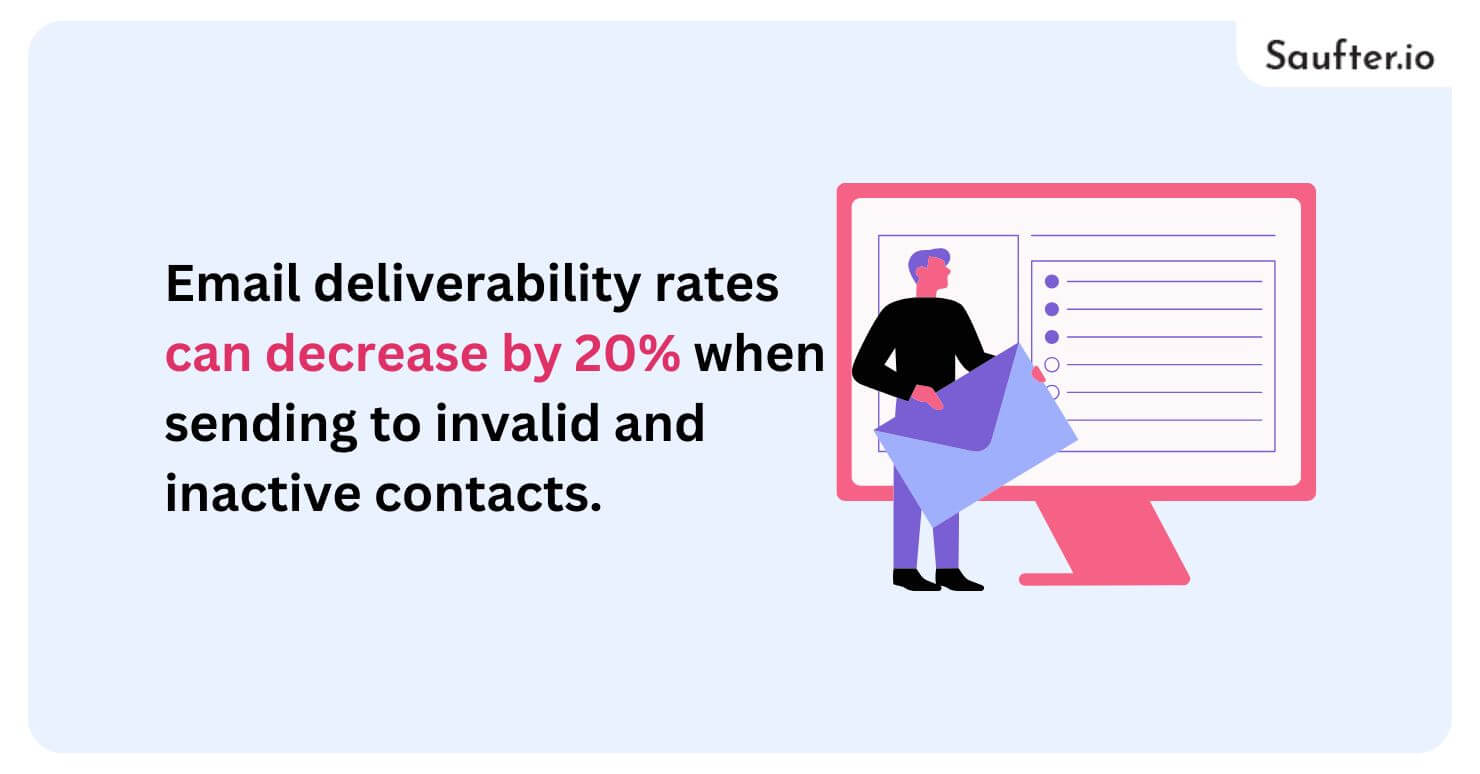
Before you even start sending, it’s not good to have a list full of inactive, or worse yet, bad emails, as this can harm your sender reputation and ultimately lower your campaign’s ROI.
Here’s how to clean your email list effectively:
- Remove Inactive Subscribers: Find who never opened or clicked in 3–6 months. Stir a few re-engagement campaigns before cutting the string.
- Use Email Verification Tools: Clean your list and verify it on a regular basis to eliminate worthless, fake, misspelled, or incorrect emails.
- Segment Your Audience: Isolate your engaged users from your unengaged ones and send personalized campaigns that increase interactions.
- Monitor Hard and Soft Bounces: Remove emails causing hard bounces immediately and track soft bounces for follow-up.
- Make Unsubscribing Easy: Make it easy to unsubscribe so you won’t be labeled a spammer and maintain your email list hygiene.
With a clean list, your unlimited contacts’ email marketing campaigns get to real, interested subscribers, so you can achieve optimum results every time.
Conclusion
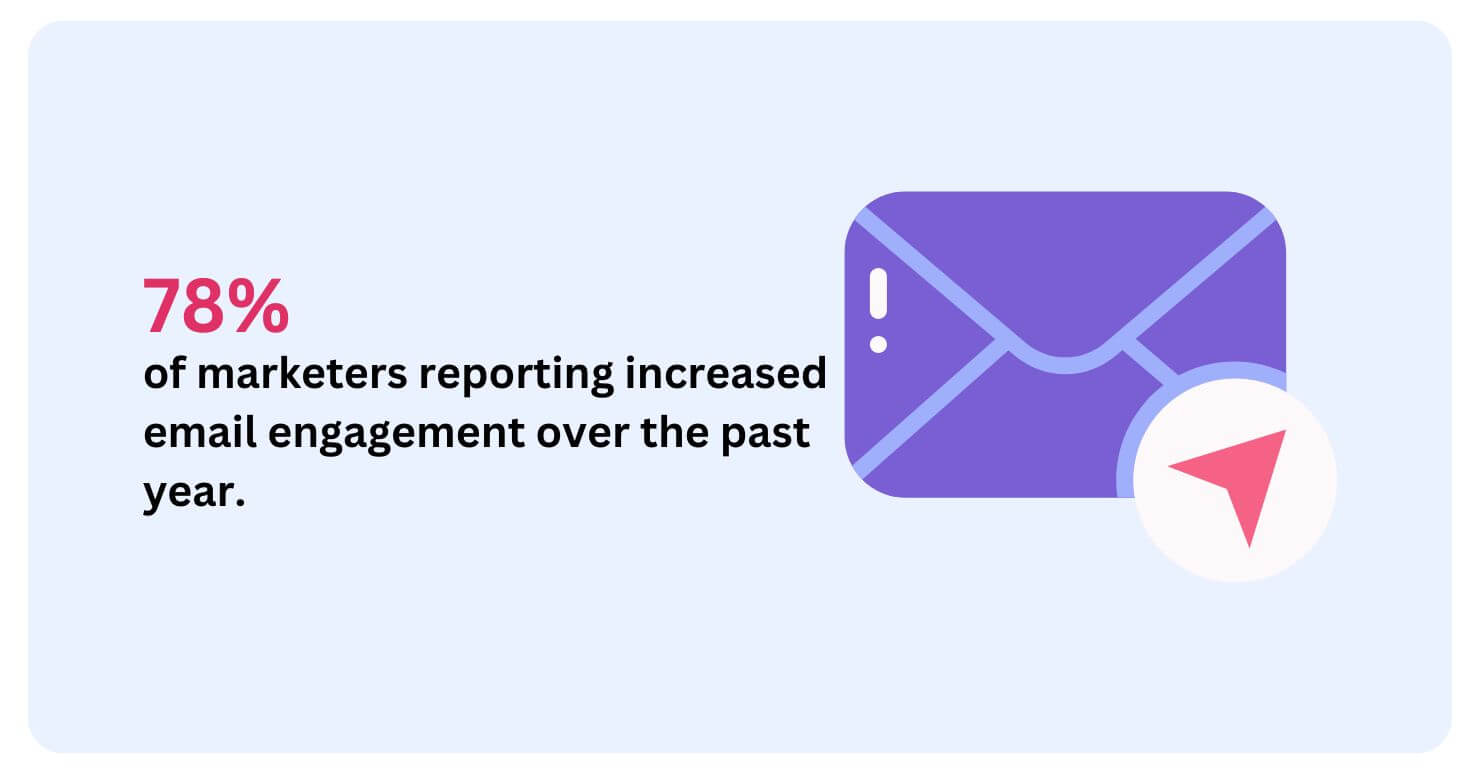
Investing in the right unlimited contacts email marketing platform is essential for businesses aiming to scale their communication without restrictions. With 78% of marketers reporting increased email engagement over the past year, it’s clear that email remains one of the most effective channels for customer outreach.
As your subscriber list grows, it’s critical to have a solution that can handle high volumes while maintaining strong performance.
Platforms like Saufter AI excel in this space by offering AI-powered features such as user behavior tracking, smart campaign suggestions, and advanced personalization.
With a reliable unlimited contacts email marketing tool like Saufter, you can deliver targeted, high-converting emails without ever worrying about contact limits, ensuring your campaigns remain scalable, effective, and future-ready.
